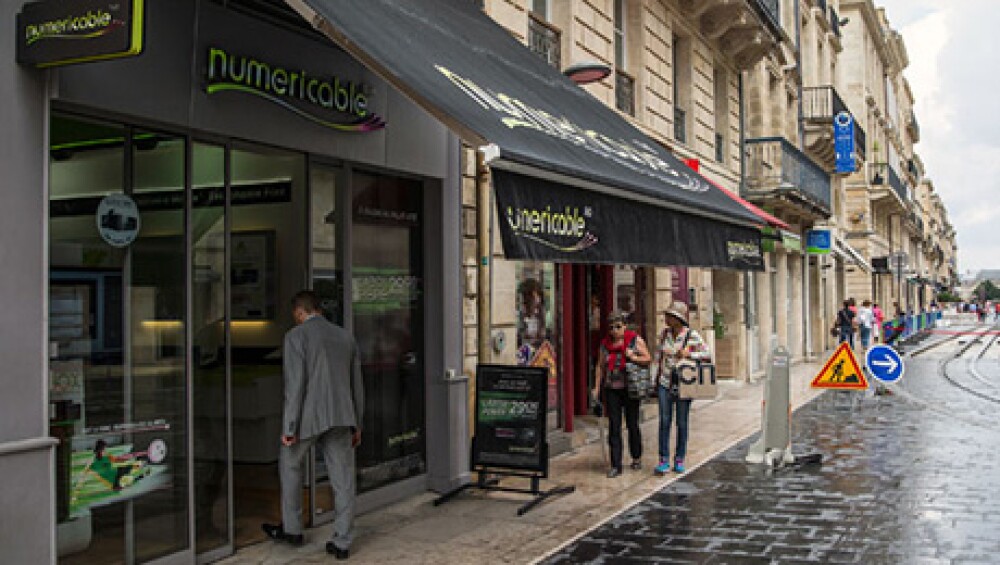Entrepreneur Patrick Drahi’s push to turn Altice into Europe’s largest cable operator reached several milestones in 2014. In January, Drahi took public the Luxembourg-based company he founded with a €1.3 billion ($1.8 billion) listing on Euronext Amsterdam. Three months later Numericable Group, the French cable provider that is 75 percent owned by Altice, won a bruising takeover battle for SFR, the mobile telecommunications division of Paris-based media conglomerate Vivendi. Numericable triumphed over French construction and media giant Bouygues by raising its bid price twice, to $23.3 billion. The merger, approved by regulators in late October, could close by the end of 2014.
In pursuit of victory, Altice put together a financing package that resulted in the biggest-ever high-yield bond deal: an offering worth some €12 billion, split between euros and U.S. dollars. The April issuance, which stood out for its speed and efficiency, reflected pent-up demand for jumbo transactions by attracting €100 billion in orders. “Demand was also very strong because high-yield investors have made a lot of money in this sector in the past; they know Altice well,” says CFO Dennis Okhuijsen. Including €4 billion in syndicated loans, the financing totaled roughly €16 billion.
While Drahi and Altice CEO Dexter Goei orchestrated the SFR bidding war, Okhuijsen, 44, delivered a master class in managing a banking syndicate. “We had been working on the acquisition for some time, and it was very important to have a committed bank group,” he says. “This was a dynamic process, so every time the price went up we needed to increase the financing package and banks had to re-sign the commitment papers.”
Thanks to his experience in the sector — he spent seven years as corporate treasurer of London-based cable giant Liberty Global before joining Altice in 2012 — Okhuijsen had relationships with the top investment banks in high-yield debt. He signed them up early to prevent Bouygues from mobilizing its firepower.
Led by Deutsche Bank, JPMorgan Chase & Co. and Morgan Stanley (which also acted as M&A adviser), the banks were as keen as Altice to refinance the bridge loans quickly in the bond market. There Okhuijsen loosened his iron grip on the syndicate: “They were backstopping the long-term capital at a certain rate, so as long as they achieved a price below that rate they had flexibility to use either bonds or loans,” he says.
Okhuijsen wanted to pay as little as possible for funding, so he let the banks raise the bonds in euros and dollars, and issue paper across the curve. Flexibility became crucial in the structuring: Vivendi will hold 20 percent of the combined Numericable-SFR, and Altice will have an option to acquire that stake within three years. Vivendi stipulated a maximum leverage exposure to Numericable, forcing Altice to issue bonds too.
The banks found cheaper funding in the dollar market, so they reduced the euro segment of the deal; strong demand for the bonds encouraged them to shrink the loan portion as well. In total, Numericable and Altice issued €7.9 billion and €4.15 billion worth of bonds, respectively. Ranging in duration from three to ten years, they were priced to yield between 4.875 and 7.75 percent.
“In the end, we got the biggest order book in the history of capital markets and got 99 out of the top 100 high-yield investors, and we received five to ten orders of more than $2 billion,” Okhuijsen recalls. The banks made out handily too, collecting an estimated $237 million in fees.
Top 10 Deals of 2014
- Kinder Morgan Goes All In
- Comcast Faces Screen Test
- Actavis Realizes Bigger Pharma Ambitions
- Medtronic, Covidien Home In on Tie Up
- Lafarge and Holcim Pour It On
- Alibaba Sets IPO Record with NYSE Debut
- Facebook’s Data-Driven Takeover of WhatsApp
- Altice Turns Paper Profit
- Eurobank Ergasias Spearheads a Greek Banking Revival
- Bond Issue Boosts U.K.'s Renminbi Trading Cred






